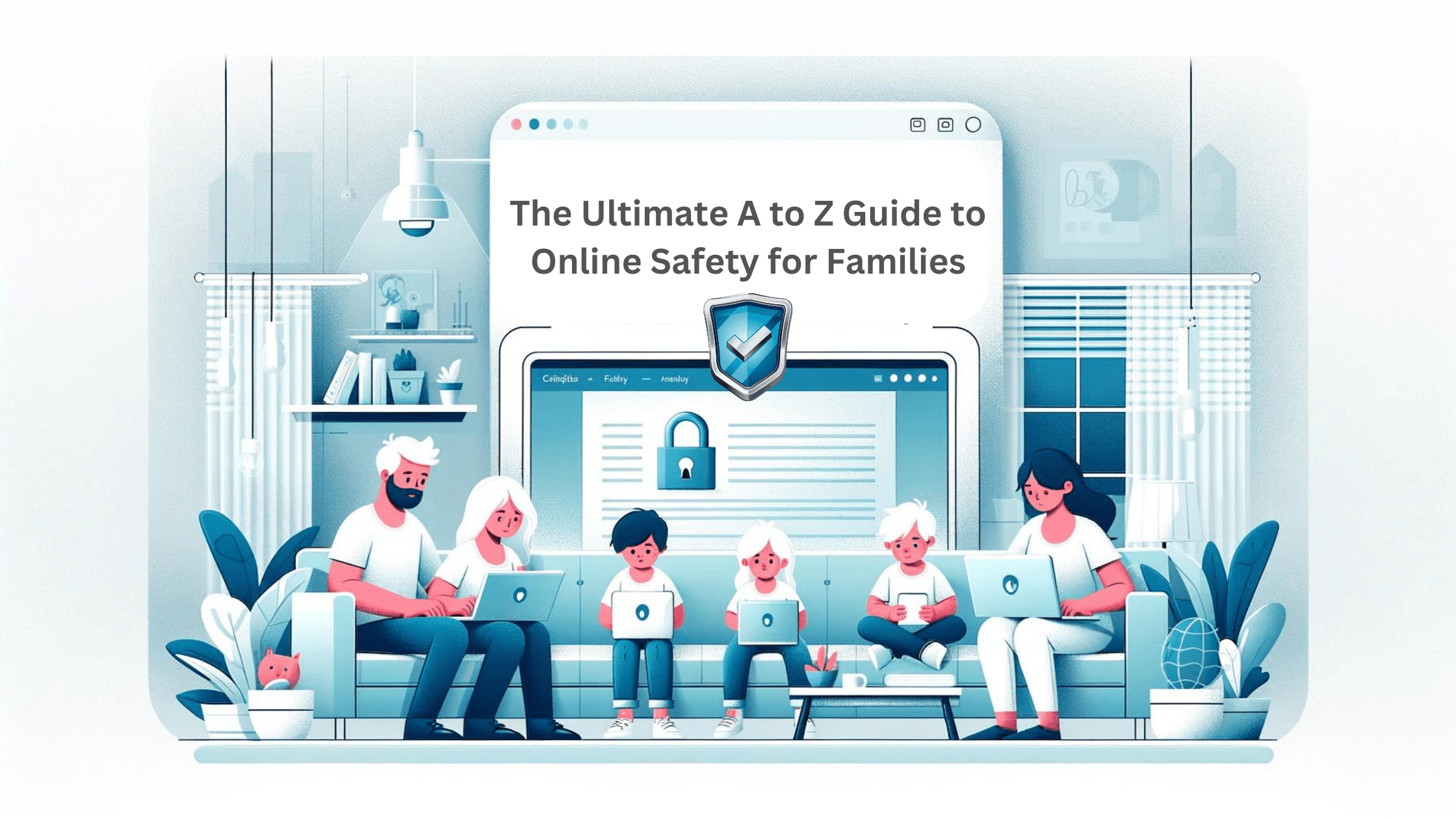Introduction
Online safety for your family is vital. Our A to Z guide provides tips for creating a secure digital environment. From setting boundaries and educating your children to using tools like Cybird, ensure your loved ones are protected.
A – Awareness
- Stay Informed: Keep up-to-date with the latest online threats and safety practices.
- Educate Everyone: Teach family members about the importance of online safety and the risks involved.
- Recognize Risks: Identify potential online threats such as phishing, malware, and inappropriate content.
B – Boundaries
- Set Rules: Establish clear guidelines for internet use, including time limits and approved websites.
- Use Filters: Implement parental controls to restrict access to inappropriate content.
- Personal Information: Teach family members not to share personal information online.
- Block Malicious Content: Use Cybird to block malware and phishing attempts.
C – Communication
- Open Dialogue: Maintain an open line of communication about online experiences and concerns.
- Report Issues: Encourage reporting any suspicious activity or uncomfortable interactions immediately.
- Social Media: Discuss the importance of privacy settings and cautious sharing on social media platforms.
D – Defense
- Use Protection: Install and maintain security software on all devices.
- Secure Accounts: Use strong, unique passwords and enable two-factor authentication.
- Regular Updates: Keep all software and devices updated to protect against vulnerabilities.
- Cybird Protection: Use Cybird for comprehensive security coverage.
E – Education
- Learn Together: Participate in online safety courses and workshops as a family.
- Stay Curious: Encourage asking questions about anything unclear or suspicious online.
- Digital Literacy: Foster an understanding of how the internet works and its potential dangers.
F – Filtering
- Content Filters: Use filtering software to block harmful websites and inappropriate content.
- App Restrictions: Control app installations and permissions on devices.
- Safe Search: Enable safe search settings on search engines.
G – Guidelines
- Internet Use Policy: Create a family internet use policy outlining acceptable and unacceptable behaviors.
- Device-Free Zones: Designate areas where devices are not allowed, like bedrooms and dining areas.
- Supervision: Monitor younger children’s online activities closely.
H – Health
- Screen Time: Limit screen time to ensure a healthy balance with offline activities.
- Breaks: Encourage regular breaks to prevent eye strain and fatigue.
- Physical Activity: Promote physical activities and hobbies that don’t involve screens.
I – Identity Protection
- Anonymity: Teach the importance of maintaining anonymity online.
- Data Privacy: Explain how to manage privacy settings on social media and other platforms.
- Secure Sharing: Be cautious about sharing photos and personal details online.
J – Judgement
- Critical Thinking: Teach children to think critically about the information they find online.
- Scams: Educate on how to identify and avoid online scams and phishing attempts.
- Trust: Discuss who to trust online and who to avoid.
K – Knowledge
- Stay Updated: Regularly update your knowledge about new online trends and threats.
- Share Knowledge: Exchange information with other parents and families about online safety practices.
- Learn Platforms: Understand the platforms and apps your children use.
L – Limits
- Usage Limits: Set daily limits on internet usage for different family members.
- Content Limits: Restrict access to certain types of content based on age appropriateness.
- Spending Limits: Monitor and control online spending, including in-app purchases.
M – Monitoring
- Activity Monitoring: Use software to monitor online activities and detect unusual behavior.
- Check-ins: Regularly check in on what children are doing online.
- Device Access: Know the passwords to your children’s devices for occasional reviews.
N – Navigation
- Safe Browsing: Teach how to navigate the internet safely and avoid dangerous sites.
- Bookmarking: Bookmark safe and frequently used websites.
- Browser Settings: Adjust browser settings for optimal security.
O – Openness
- Transparency: Be open about your own online activities and encourage the same from family members.
- No Secrets: Foster a culture where no online secrets are kept among family members.
- Trust Building: Build trust by respecting privacy while ensuring safety.
P – Protection
- Antivirus Software: Use reliable antivirus software to protect against malware.
- Firewall: Enable firewalls on all devices.
- Backup Data: Regularly backup important data to prevent loss in case of a cyber attack.
Q – Quality Time
- Offline Activities: Engage in offline activities to reduce dependency on digital devices.
- Family Bonding: Spend quality time together without screens to strengthen family bonds.
- Shared Interests: Discover shared interests that do not involve the internet.
R – Responsibility
- Accountability: Make each family member accountable for their online actions.
- Digital Footprint: Teach about the long-term impact of their digital footprint.
- Respect: Promote respectful behavior online, including towards others.
S – Security
- Encryption: Use encrypted communication tools for sensitive information.
- Secure Networks: Ensure your home network is secure with a strong password.
- Security Updates: Apply security updates as soon as they are available.
T – Trust
- Build Trust: Foster a trusting relationship where children feel safe discussing online issues.
- Verification: Verify the credibility of websites and online contacts.
- Parental Controls: Use parental control tools like Cybird judiciously to build trust without being intrusive.
U – Understanding
- Empathy: Understand the challenges and pressures children face online.
- Generational Gap: Bridge the generational gap with a mutual understanding of technology use.
- Learning Curve: Acknowledge that learning about online safety is a continuous process.
V – Vigilance
- Stay Alert: Always be vigilant about potential online threats.
- Unexpected Changes: Watch for unexpected changes in device performance or behavior.
- Reporting: Know how to report cyber crimes and suspicious activities.
W – Wi-Fi Security
- Secure Wi-Fi: Use WPA3 encryption for your Wi-Fi network.
- Guest Network: Set up a guest network for visitors.
- Public Wi-Fi: Avoid using public Wi-Fi for sensitive transactions.
X – eXample
- Model Behavior: Set a good example with your own online behavior.
- Respect: Show respect for others online, demonstrating the same for your family.
- Healthy Habits: Exhibit healthy digital habits for your children to emulate.
Y – Youth Education
- Early Education: Start teaching online safety from a young age.
- Age-Appropriate: Tailor online safety education to the child’s age and maturity level.
- Positive Reinforcement: Use positive reinforcement to encourage safe online behavior.
Z – Zero Tolerance
- No Exceptions: Have a zero-tolerance policy for cyberbullying and inappropriate content.
- Immediate Action: Take immediate action if any online safety rules are breached.
- Clear Consequences: Ensure clear consequences for unsafe online behavior.
Summary
Ensuring online safety for your family is essential. Our A to Z guide offers practical tips, from setting boundaries and educating children to using tools like Cybird for protection. This guide emphasizes awareness, communication, and vigilance to help your family navigate the digital world securely.

Founder & CEO of Cybird. Cybersecurity expert for families.
